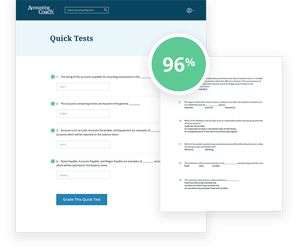For multiple-choice and true/false questions, simply press or click on what you think is the correct answer. For fill-in-the-blank questions, press or click on the blank space provided.
If you have difficulty answering the following questions, read our In-Depth Explanation for this topic.
True
False
True
False
Factory Supplies
Quality Control
Interest Expense
ABC
Direct Labor Hours
Machine Hours
ABC
Direct Labor Hours
Machine Hours
Less
More
Little
Much
True
False
True
False
True
False
True
False
Activities
Products
True
False
True
False
True
False

Get Our Premium Activity Based Costing Test Questions When You Join PRO
Receive instant access to our entire collection of premium materials, including our 1,800+ test questions.
View All PRO FeaturesFeatures
Free
PRO
Read 3,034 Testimonials